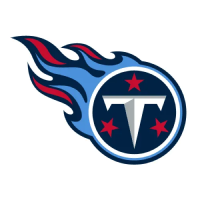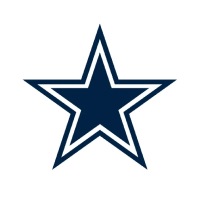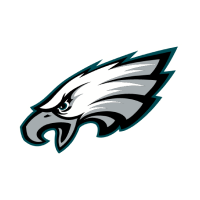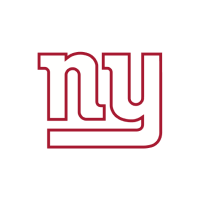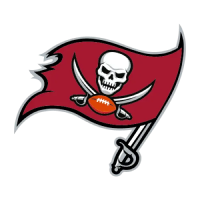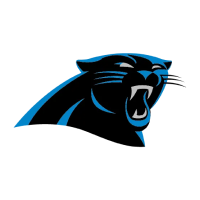Baltimore Ravens Post-Draft Team Guide
The Ravens haven’t had a losing season since 2015, which was just their first season with more losses than wins since 2007. The Ravens have made the postseason three consecutive times, spurred on by the 2019 NFL Most Valuable Player Lamar Jackson and a stout defense. The team has won 35 regular season games over that stretch of play—it’s a great time to be a Baltimore Raven. If you solicited trading places with fans of about 25-28 other teams across the league, whoever walked away supporting Baltimore would come out the winner.
Yet, for all of the good that surrounds the Ravens, there are also some dark clouds on the horizon. The Ravens need to find a way to push themselves over the top—the team has been bounced from the postseason in the divisional round in two consecutive seasons. This despite finishing two consecutive regular seasons with the No. 1 point differential in football and scoring offenses (1st and 7th) and defenses (3rd and 2nd) that rank among the tops in all of football. Jackson had a breakthrough in 2020 with his first career playoff win (28-12 over Tennessee), but the team followed that showcase up with a three-point performance in Buffalo against the Bills.
With losses to the pass rush group in free agency this offseason and the departures of Hayden Hurst (trade) and Marshal Yanda (retirement) from the previous offseason still looming large, the Ravens had to walk out of this year’s NFL draft with a winning class in order to offer hope that the big breakout may still come. The good news? Eric DeCosta and the Ravens’ staff are known for hitting it out of the park.
Did they do it again? Let’s take a look and find out:
Round 1: Rashod Bateman, WR, Minnesota
Find me a better fit for Bateman in the NFL if you can. The Gophers ran Bateman all over the place but the team’s bread and butter was the RPO game with Bateman breaking into the middle of the field—and he routinely caught throws in traffic and continued to press up the field for yards after catch. His college quarterback did him little favors, too. Bateman was pulling throws off the top of the rim, digging them out down low, and extending back to pull them off his back hip. But he was consistent with his hands and constantly won in the middle.
Jackson’s style of play and so much of what the team does from a play-action perspective aligns with Bateman’s routes into the void on the second level. That’s a smart investment for Baltimore as they try to position Jackson to live up to the big contract he feels destined to sign to stay with the team.
He’s not the biggest. He’s not the fastest. But Baltimore already had one of each of those between 2019 third-round pick Miles Boykin and 2019 first-round pick Hollywood Brown. Baltimore didn’t need a physical skill set in their wide receiver room. They needed an artist and a technician. Bateman is both. This is a home run. I wouldn’t be surprised if Bateman leads all first-round wide receivers in receiving production in 2021.
Round 1: Odafe Oweh, EDGE, Penn State
What good is a pass rusher who isn’t effective rushing the passer? Well, it depends on where he lands. And in the case of Oweh and the Ravens, there’s plenty of value here. This is the same Baltimore defensive system that took a fifth-round pick out of Grand Valley State in Matthew Judon and turned him into a multiple-time Pro Bowl player who left Baltimore in free agency with 15.5 sacks, 23 tackles for loss, and 54 quarterback hits over his final two seasons with the team.
How does Oweh compare to Judon?
Take a player with effectively the same size and go into his ‘edit player’ screen and turn all the traits up to ‘99’. Oweh is an exponentially more dynamic athlete and projecting him into this Ravens’ defense is pretty straightforward. He’ll play the Judon role and get manufactured free runs at opposing quarterbacks with Baltimore’s blitz tendencies. And when you consider Oweh’s growth against the run at Penn State this past year, it just further solidifies the vision. Hopefully, Oweh can continue to flesh out his pass rush plan with the Ravens and become more effective in winning one-on-one reps against opposing tackles. But at the very least he’ll get his fair share of production as a key cog in the Ravens’ system.
Round 3: Ben Cleveland, IOL, Ohio State
It would be unfair to suggest that Yanda’s replacement is here in Cleveland, but Cleveland can certainly man a guard spot without issue and bring more quality play to the inside. Remember: Baltimore’s at their best when they can get movement in the run game, and Cleveland was a key member of a Georgia Bulldogs offense that operated the same way. At more than 350 pounds, Cleveland is a mountain of a man but offers really surprising fluidity for his stature. He isn’t a robot or a heavy-legged waist bender up front trying to drive bodies off the line. Look for Cleveland to push to start opposite Kevin Zeitler and allow the Ravens to get the kind of physicality in the middle that will create nightmares for opposing AFC North defenses. Cleveland is built to be an asset when the calendar flips to January.
Round 3: Brandon Stephens, CB, SMU
If there was a surprise selection for Baltimore, it would be Stephens. But the Ravens are a team that routinely drafts not just for need, but for several years in advance. The Ravens’ cornerback room has one cornerstone locked in with Marlon Humphrey but veteran Jimmy Smith has a prominent spot on the depth chart. That’s a good thing—but he was a first-round pick back in 2011. Stephens can be groomed to take that role in a few years or, depending on what happens with Marcus Peters (his contract is up after 2022), perhaps an even bigger role awaits for Stephens if he develops.
Stephens is a recent transition to cornerback after spending time with the UCLA program as a running back. But he has ample physical tools, so a proverbial “redshirt season” in 2021 is an ideal scenario for the SMU product.
Round 4: Tylan Wallace, WR, Oklahoma State
For the Ravens’ wide receiver room, doubling down and getting a second receiver is a good strategy. And the value of finding Wallace into the early portions of Day 3 is exactly how the Ravens stay the Ravens: pick good football players when they fall to you on the board. Wallace comes from an Oklahoma State offense that, not too dissimilarly from Minnesota, called upon plenty of RPOs. Wallace doesn’t offer the same middle-of-the-field prowess as Bateman (and he ran the majority of his routes on the right side of the Cowboys offense, so there’s some versatility that needs to be added to his game. But Wallace tracks the deep ball well and that should come in handy for all of the explosive plays Baltimore seeks in the play-action passing game.
Round 5: Shaun Wade, CB, Ohio State
The downside to this selection is next to zero. The upside? Once upon a time, Wade was considered a possible first-round selection at cornerback despite his role as a slot defender in the Ohio State defense. Wade is fairly safe to dismiss ever playing outside cornerback at a high level given his regression and he’ll need to improve his tackling in order to hold reps consistently on special teams, but he is the kind of athlete you bet on late in the draft and hope to see growth in.
Don’t sleep on seeing Wade this year in the nickel, too. Nickel defender Tavon Young has played in two games in the last two years due to injury.
Round 5: Daelin Hayes, EDGE, Notre Dame
My personal expectations for Hayes are to far out-perform his draft slot. He comes to Baltimore likely to be charged with filling a hybrid role—not dissimilar to defenders like Kamalei Correa and Tyus Bowser. Hayes is more of a true pass rusher versus Bowser’s role as a stack defender with mobility across the front. But Hayes can play. He’s got a good punch and looked like a promising investment in 2020 after dropping some weight and playing a bit lighter than where he’d previously been listed.
Round 5: Ben Mason, FB, Michigan
A fullback? Seriously? Uh, yes. For this offense, absolutely. The Ravens have one of the most unique schematic challenges in football when they’ve got healthy personnel and get a defense on their heels early. Baltimore’s ability to condense their sets and run power with Jackson’s speed to the edge is the ultimate conflict in the NFL’s run game. And it works best with a competent fullback for when the read is to give the ball inside or if Jackson runs power behind lead blockers.
Mason gives you a more well-rounded skill set than heavy-hitter Patrick Ricard, which should move the needle when you consider the selective touches this role will receive. You’re looking at approximately 35-40% of Baltimore’s snaps in the fullback role. And Ricard, to his credit, has 97 yards after catch over the last two years while logging 92 official receiving yards: this is a “get the ball in the flat” role and Mason can do much more with those reps.
How did Baltimore do?
The Ravens ought to feel really good about the collective sum of their 2021 draft class. Bringing in multiple wide receivers who can play immediately and should complement Jackson’s style of play will be critical to Jackson being a more well-rounded passer against teams who are going to dare him to win throwing one on one outside. That is the top priority for Baltimore for when the postseason rolls around—they cannot play their offense so heavily into the hands of what opposing defenses are trying to force them to do, which is throw into the teeth of the defense and expect results. As has been phrased this offseason, Baltimore’s style of play is fine but they certainly need an evolution. The receivers could and should bring that.
Oweh is tailor-made for this style of defense to get the most out of him as a pass rusher—I’d bet a paycheck he gets more sacks than he did last year at Penn State (if he stays healthy!). Even the team’s final pick (Mason) should end up starting sooner rather than later as well. For most teams across the league, that’s a bad thing. But for Baltimore, who loves to load up on 22-personnel and test your ability to cover the full field with your base defense, the Mason pick screams of a perfect match.
The Ravens should have a total of four rookie starters out of this group by the end of the year—so yeah. DeCosta and the Ravens did it again. Were you expecting anything different?
Filed In
Related Articles
NFL Draft
Arik Gilbert Doesn’t Need Big Workload To Be A Top NFL Draft Pick
- Aug 22, 2022
NFL Draft
2023 NFL Mock Draft: Marino 1.0
- Aug 22, 2022
Written By









